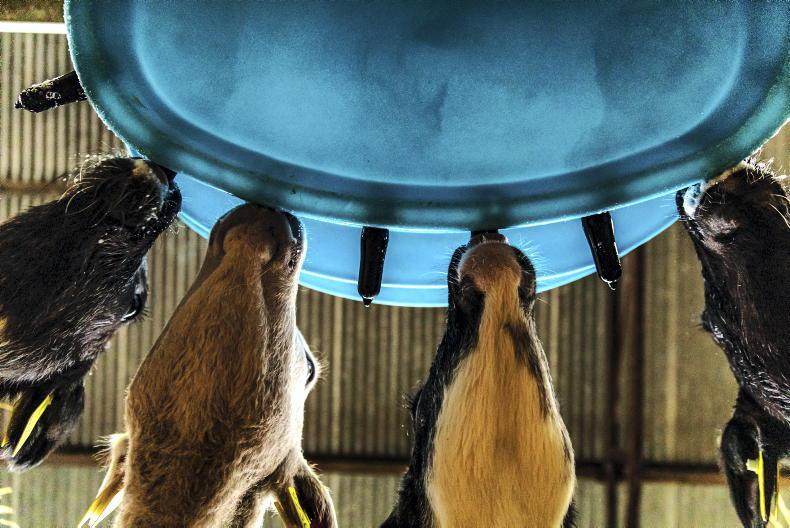When it comes to calf rearing, it really comes down to attention to detail and getting the basics right. Ensuring a good start to life for the calf will set them up for the rest of the production system. Here we take a look at some of the main points to consider when starting out with a dairy-beef system.
1 Sourcing calves
One thing that has really become apparent throughout the Thrive programme is knowing about where your calves come from and how well they have been looked after in terms of colostrum and housing hygiene is priceless. Building good relationships between dairy farmer and beef farmer is a critical piece in the puzzle.
Try to source your calves from as few farms as possible, in as few batches as possible. This helps minimise disease risk while getting calves in at the one time and one age will streamline the feeding workload as all calves will be at the same stage and their immune systems will all be developing at the same time.
2 Managing calf arrival on farm
Often the first thing farmers do when a calf arrives is administer a pneumonia vaccination. However, this may not be the best approach. Vaccinations will not work on a stressed calf. A newly arrived calf dealing with the stress of transportation, a new housing environment and potentially new pen mates needs time to settle into its new surroundings.
The best thing to do is to ensure the calf drinks on the evening of arrival. Where calves are travelling a short distance, milk replacer as the first feed works fine. If the duration of transport is greater than an hour, it is best to offer an electrolyte as the first feed to replace fluids lost during the journey. This can be repeated on the second evening to ensure calves are fully rehydrated.
Feed 1: Electrolyte on evening of arrival.
Feed 2: Milk replacer as morning feed.
Feed 3: Electrolyte on second evening.
Feed 4 and subsequent feeds: Milk replacer.
3 Housing
Have the calf pens bedded and ready prior to calves arriving to minimise stress and disruption to the new arrivals. Do not skimp on straw in the calf shed as it plays a vital role in overall calf health.
If you kneel down on the bedding and your knees are wet when you stand up, more bedding is required. Bedding will need to be topped up every couple of days to ensure it is sufficient. The importance of bedding really cannot be emphasised enough.
It is the primary barrier between calves and disease and they need a deep bed to nest into to ensure they are adequately warm on cold days.
Good ventilation is also important in the calf shed as it removes moisture and stale air from the calf’s environment. However, draughts should be avoided at calf level as these can cause chills. Be aware of draughts under doors or gates.
4 Health
Every farm will have different health protocols to deal with the issues on that farm. It is worthwhile sitting down with your vet prior to any calves being purchased to create a health protocol tailored to your farm from arrival to point of slaughter.
In saying this, a pneumonia vaccination in the calf-rearing shed is a must as it provides an extra layer of protection. However, it does not make up for poor shed ventilation, hygiene or nutrition.
On farms starting out with dairy-beef systems, it is going to be a learning curve until you see what issues arise on your farm. It is important to learn from these and put a stringent protocol in place to deal with these issues in future years.
Where there are other stock classes on farm, it is important that you do not bring disease-causing bugs from them into the calf-rearing shed. Calves should be fed first thing in the morning prior to feeding any other stock. A disinfection point should be placed at the door of the shed and boots should be cleaned every time, prior to entering the shed.
5 Water
Often overlooked in calf sheds, calves should have constant access to fresh clean water from day one. Milk is a feed to calves, they also need access to water.
If water intake is limited in any way, feed intake in terms of concentrates and forage will be inhibited.
Firstly, are they at the correct height for calves to drink from? Check drinkers regularly as calves will often dung in them. Clean out troughs daily to keep the water fresh.
On the demonstration farm, every pen has two water sources so that if one is contaminated, the other source is still fresh, minimising any water intake issues.






 This is a subscriber-only article
This is a subscriber-only article










SHARING OPTIONS: